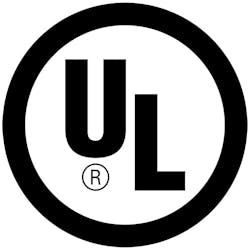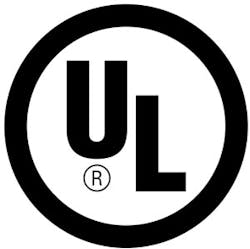A Primer on UL Marking and Application Guides
- NEMA – National Electrical Manufacturers Association
- NECA – National Electrical Contractors Association
- API – American Petroleum Institute
- UL
- FM Global
- ISA – The International Society of Automation
There are many informational notes throughout the NEC that point the user to these group’s standards. However, due to the enormous amount of information out there that must be considered, it would be impossible to include all references of the necessary standards in the NEC. Possessing knowledge of these standards is critical when designing an electrical system. Likewise, there is other information available that we must be knowledgeable of in addition to industry standards such as UL Marking and Application Guides.
UL Marking Guides are different than UL Standards. UL Standards focus on equipment specifications and requirements necessary for manufacturing, testing, and proper enforcement of the product. Marking Guides, on the other hand, offer information to the user as to what the markings of UL listed or certified products mean.
There are currently 11 UL Marking and Application Guides available from UL. They are free and available for download on www.ul.com.
- Alternative Energy Equipment and Systems Marking and Application Guide
- Commercial Cooking Equipment Marking and Application Guide
- Molded-Case Circuit Breakers Marking and Application Guide
- Dead-Front Switchboards Marking and Application Guide
- Green Construction Application Guide
- Electrical Heating and Cooling Equipment Marking and Application Guide
- Lightning Protection Marking and Application Guide
- Luminaires Marking and Application Guide
- Panelboards Marking and Application Guide
- Swimming Pool Equipment, Spas, Fountains and Hydromassage Bathtubs Marking and Application Guide
- Wire and Cable Marking and Application Guide
The Guides offer a wealth of information on how products are marked and can be applied. For instance, a look at the Molded-Case Circuit Breakers Guide will offer us information like this:
“100% Continuous Rated — Unless otherwise marked for continuous use at 100% of its current rating, a circuit breaker is intended for use at no more than 80% of its rated current where in normal operation the load will continue for three hours or more. A breaker with a frame size of 250A or more, or a multi-pole breaker of any current rating greater than 250V, may be marked to indicate it is suitable for continuous use at 100% of its current rating. The marking is “Suitable for continuous operation at 100% of rating only if used in a circuit breaker enclosure Type ____or in a cubicle space______by_____ by _____ inches” or an equivalent statement. This type of breaker may also be marked to indicate it is to be used with wire sized for a 75°C conductor with 90°C insulation and used with 90°C wire connectors.”
Engineers, designers, electricians and enforcement authorities should be very familiar with — and have a current copy of — all applicable Marking Guides at their fingertips. They are regularly updated by UL and kept current with the latest NEC requirements and technology.
© 2015 Fluor Corporation. All Rights Reserved.
About the Author
Eddie Guidry
Senior Fellow
Eddie Guidry is a senior fellow with Fluor Enterprises, Inc., Sugar Land, Texas. He is highly skilled in electrical and control systems for industrial construction, design, and engineering (both domestic and abroad). The majority of Eddie’s 38 years of experience includes upstream and downstream portions of petrochemical plants and refineries. He is also heavily experienced in water and wastewater treatment facilities. Eddie is very active in the development of U.S. national (ANSI) and international codes and standards, and has been a principal member of the National Fire Protection Association (NFPA) National Electrical Code (NEC) committee since 1999 and NFPA’s National Advisory Committee on Electrical Safety Research since 2008. Eddie, who has also developed and conducted many electrical courses and seminars over the years, currently holds the corporate Master Electrician license for Fluor Corporation in the State of Texas and is also an ICC/IAEI certified electrical inspector.

